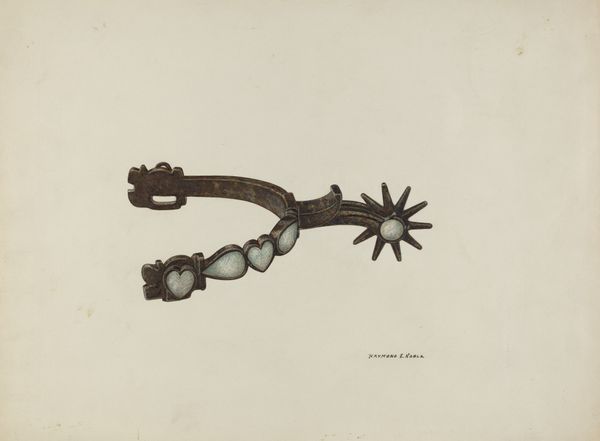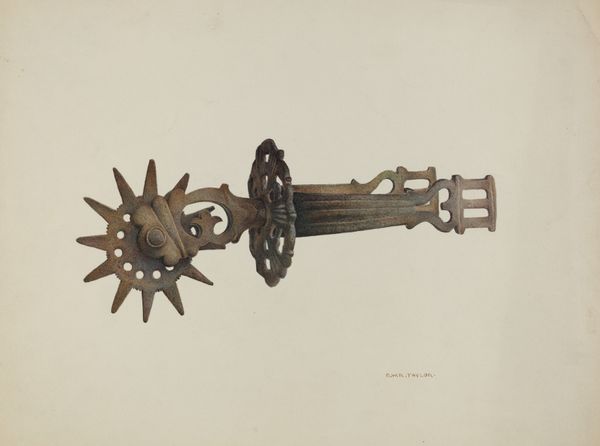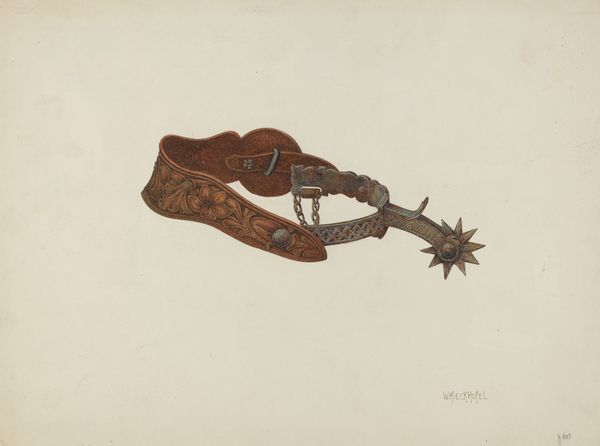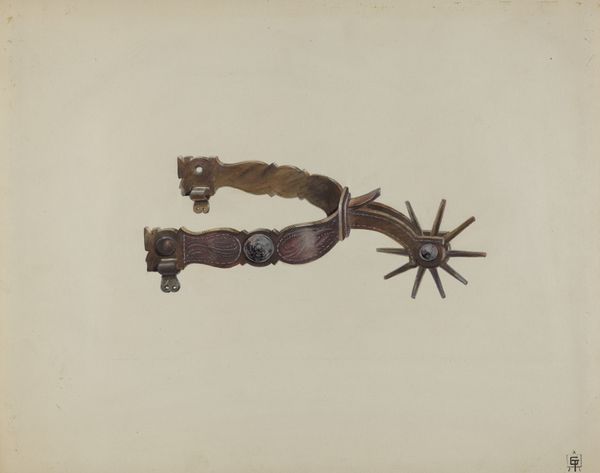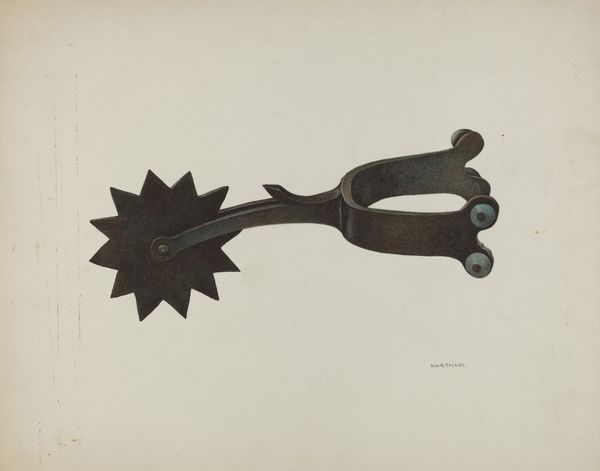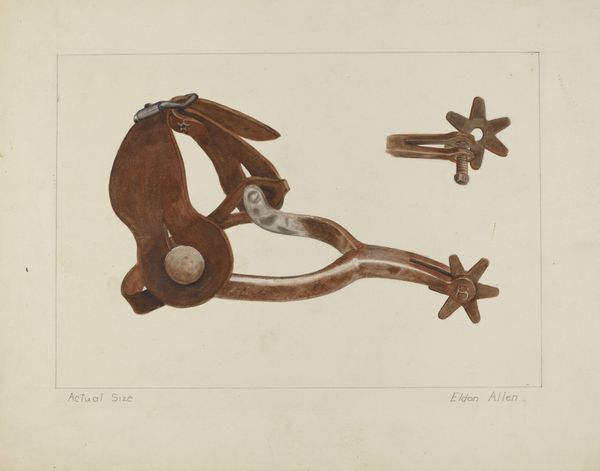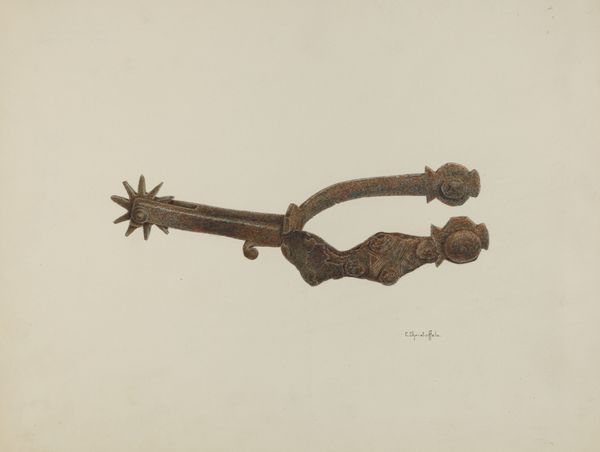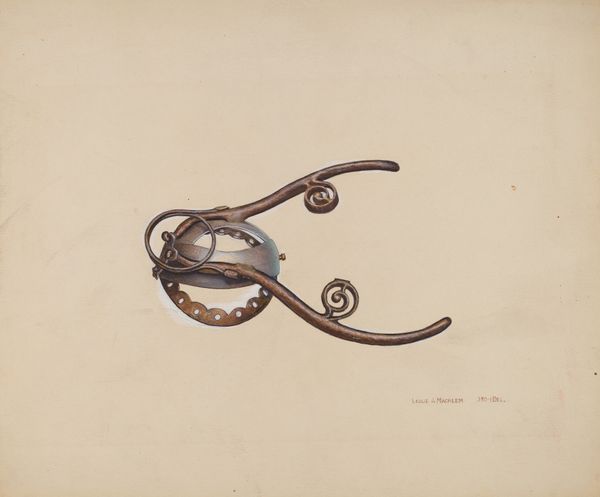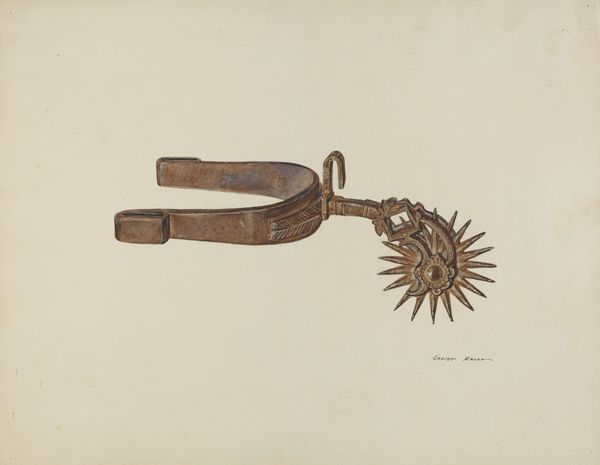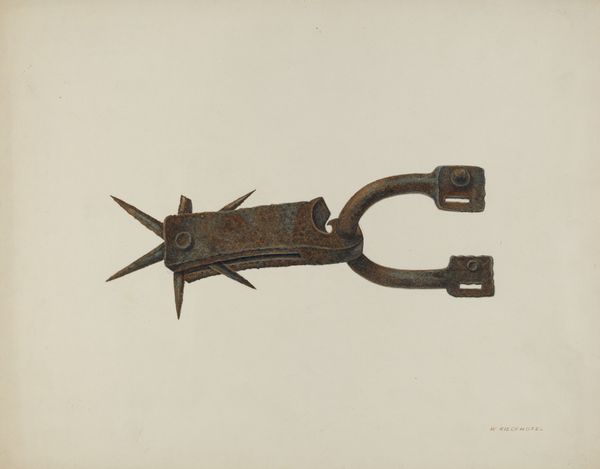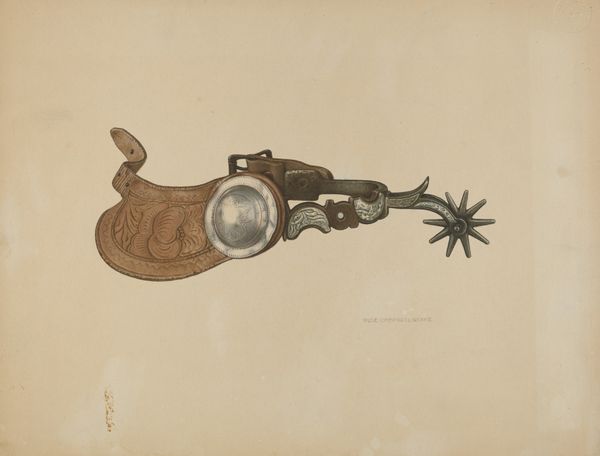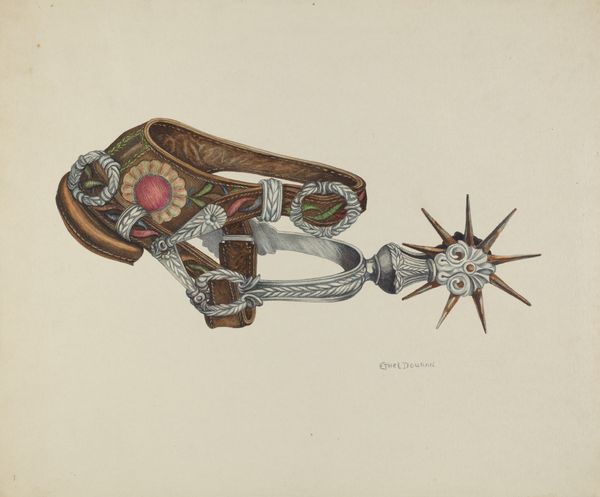
drawing, watercolor
#
drawing
#
watercolor
#
academic-art
#
watercolor
#
realism
Dimensions: overall: 28 x 35.6 cm (11 x 14 in.)
Copyright: National Gallery of Art: CC0 1.0
Curator: Here we have Verna Tallman’s "Spur," a watercolor and graphite drawing, created around 1938. What leaps out at you? Editor: There's such delicacy. Despite being an instrument intended for control, even dominance, it almost floats on the page, this watercolor of a cowboy's spur. A strange tenderness in its depiction. Curator: It’s interesting you say that. There’s an inherent tension here: the detailed, almost photorealistic rendering contrasting with the softness of the medium and the rather…gentle composition. Think about the spur's historical context. In what spaces, beyond ranching and equestrianism, was this symbolism consumed? Editor: Well, popular culture certainly picked up on the image. Think Westerns. It signified authority, the rugged individualist... the conquering hero perhaps, although, given the brutal legacy towards Indigenous populations, such an image is a contested one. Its original use was of course more quotidian, more linked to labour and utility than some romantic vision. Curator: Absolutely, its association with popular imaginaries around cowboys is intriguing. But what does it communicate within the scope of American art from that era? We are not too far removed from a moment that celebrated a mythology around an American pastoral, such as with the work of Grant Wood. Editor: The timing makes me wonder if the artist consciously engaged in deconstructing certain aspects of such idealizations. This single spur, devoid of context, removed from the rider and the horse. Does it emphasize something starker? An acknowledgment of a sometimes cruel necessity perhaps, rather than simply lionizing it as a symbol of American virtue? Curator: A potent point. There's also the choice of watercolor itself. Why choose a delicate, almost ephemeral medium to represent such a potentially violent tool? It invites us to reflect upon the multiple layers of symbolism interwoven into what might first appear to be a simple still life. Editor: Looking closer now, there is the potential to imagine something being held, some foot in leather, something cinched too tight. The artist doesn’t shy away from allowing for that darkness. A simple object—with all the quiet and terrible meanings an object can bear.
Comments
No comments
Be the first to comment and join the conversation on the ultimate creative platform.
